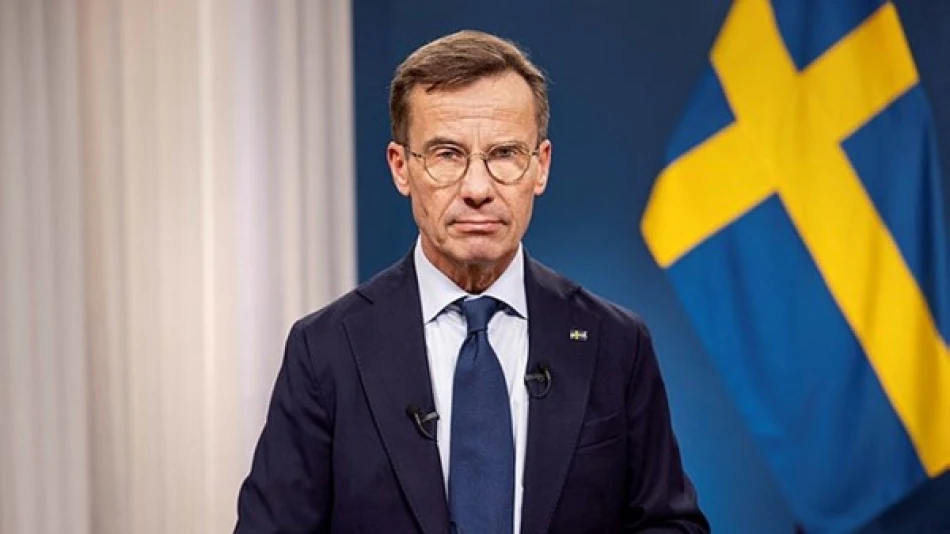
Sweden Offers to Facilitate Peace Negotiations in Ukraine
Sweden Offers Air and Naval Monitoring to Secure Ukraine Peace Deal
Swedish Prime Minister Ulf Kristersson has positioned his country as a key contributor to future Ukraine peace enforcement, offering aerial surveillance and maritime operations rather than ground troops. This strategic approach reflects NATO's evolving thinking on post-conflict security guarantees—emphasizing Ukrainian self-reliance while providing critical oversight capabilities that could deter future Russian aggression.
A New Model for Peace Enforcement
Speaking to Swedish radio ahead of Wednesday's NATO military consultations on Ukraine peace efforts, Kristersson outlined a vision that diverges from traditional peacekeeping models. Rather than deploying large numbers of foreign troops on Ukrainian soil, the Swedish approach focuses on enabling Ukrainian self-defense while providing external monitoring.
"The goal is not to deploy large numbers of troops from other countries in Ukraine, but to ensure that Ukraine can reliably take responsibility for defending itself," Kristersson stated, emphasizing the need for clarity about Swedish commitments in any peace framework.
Strategic Advantages of Air and Naval Focus
Reduced Escalation Risk
Sweden's offer of airspace and maritime monitoring represents a calculated middle ground. Unlike ground forces, which could become flashpoints for direct NATO-Russia confrontation, aerial and naval surveillance operations can maintain critical distance while providing real-time intelligence on ceasefire violations or military buildups.
Leveraging Swedish Capabilities
This approach plays to Sweden's military strengths. As a Nordic nation with extensive experience in Baltic Sea operations and advanced surveillance technology, Sweden brings unique capabilities that complement rather than duplicate existing NATO assets. The country's recent NATO membership also provides institutional frameworks for coordinating such operations.
NATO's Evolving Peace Strategy
Wednesday's military consultations signal a shift in NATO thinking about post-conflict Ukraine. Rather than the peacekeeping models used in the Balkans during the 1990s, alliance leaders appear to be crafting a hybrid approach that combines Ukrainian sovereignty with multilateral security guarantees.
This model mirrors successful deterrence frameworks in other regions, where external monitoring and rapid response capabilities have maintained stability without permanent occupation. The approach could prove more palatable to Russia while providing Ukraine with credible security assurances.
Implications for Future Negotiations
Sweden's specific offer reveals important assumptions about any eventual peace deal. The emphasis on monitoring suggests negotiators expect agreements that require verification—likely including demilitarized zones, withdrawal timelines, or restrictions on military activities near borders.
The focus on Ukrainian self-reliance also indicates that any peace framework will need to preserve Ukraine's military capabilities rather than imposing disarmament. This represents a significant evolution from earlier peace proposals that envisioned Ukrainian neutrality or military limitations.
Testing Ground for NATO's Future
Sweden's approach could establish precedents for how NATO manages future conflicts involving non-member partners. By offering specialized capabilities rather than comprehensive military presence, alliance members can provide meaningful support while managing escalation risks and domestic political concerns.
The success or failure of this model in Ukraine will likely influence how NATO approaches similar challenges in other regions where Russian influence creates ongoing tensions. For Sweden, this represents both an opportunity to demonstrate value as NATO's newest member and a test of its ability to contribute to European security architecture.
Most Viewed News

 Layla Al Mansoori
Layla Al Mansoori






